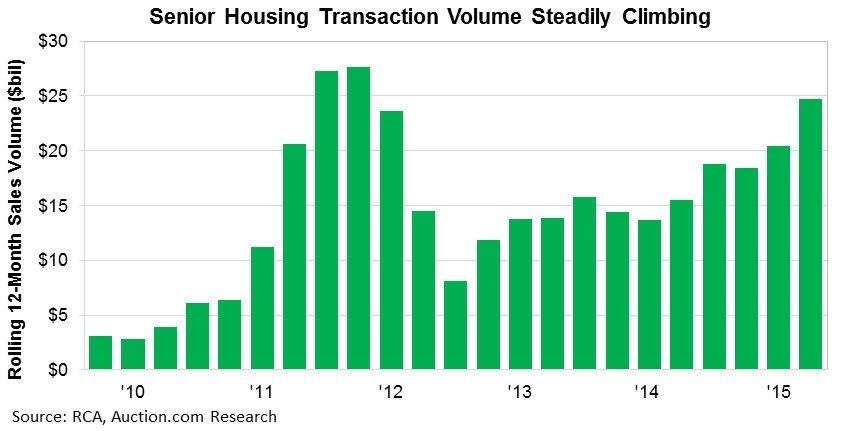 As the baby boomer generation edges closer to retirement age, housing demand for seniors is expected to increase, but could too much of a good thing mean oversupply?
As the baby boomer generation edges closer to retirement age, housing demand for seniors is expected to increase, but could too much of a good thing mean oversupply?
Auction.com released a report Wednesday highlighting that deal volume among those that are born between 1946 and 1964, has increased 60 percent year-over-year.
However, there are concerns that this building spree to meet the rising demand for senior housing may lead to an oversupply, because it is unclear of what kind of housing this group will need or at what time they will need it.
"The numbers indicate that demand will grow over the long term, although investors should always take into account the cyclical nature of the real estate market as well as regional factors," the report said.
According to Auction.com, the surge in retiring seniors have presented investors with the opportunity to acquire senior housing and care facilities.
In 2013, those that are 65 and older made up 14.1 percent of the population, while 18-64-year-olds made up 62.6 percent of the population.
 The U.S. Census Bureau expects the senior population numbers to keep rising through 2030, as the last of the baby boomer come of age. Approximately 10,000 baby boomers will reach retirement age every day over the next 19 years.
The U.S. Census Bureau expects the senior population numbers to keep rising through 2030, as the last of the baby boomer come of age. Approximately 10,000 baby boomers will reach retirement age every day over the next 19 years.
As the senior numbers grow, so does their need for housing, the company explained. Housing transactions among the senior cohort is climbing toward pre-recession peak numbers.
This year, senior housing transaction volume surpassed $20 billion, an increase of nearly 59 percent from 2014, the report found.
"The big picture demographic trends clearly paint senior housing and care as a sector on the rise, with major potential growth," Auction.com said. "However, it remains a niche asset class, offering discerning investors with a long-term view a chance to get in on the ground floor and take advantage of the changing U.S. demographic landscape."
Senior households have been rising slowly over the decades, but this is about to change in the coming years. Urban Institute’s analysis of housing trends determined that senior households are expected to grow dramatically by 2030 released in June 2015.
The Institute found in 1990, there were 20 million households for seniors ages 65 and up. In 2010, this number had reached 25.8 million, and by 2030, the institute projects that aging baby boomer households will reach 46 million.
“This dramatic growth will occur among both senior homeowners and renters, the authors said. “Our research suggests that from 2010 to 2030, senior homeowners will increase from 20 million to almost 34 million, and senior renters—who include both homeowners who will shift to renting and baby boomers who already rent—will increase from 5.8 million to 12.2 million.”

 theMReport.com Your trusted source for mortgage banking news
theMReport.com Your trusted source for mortgage banking news








